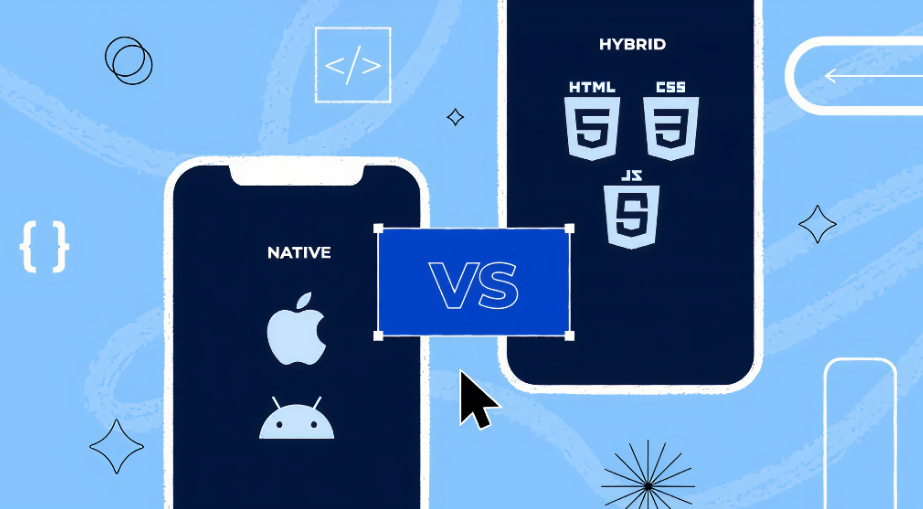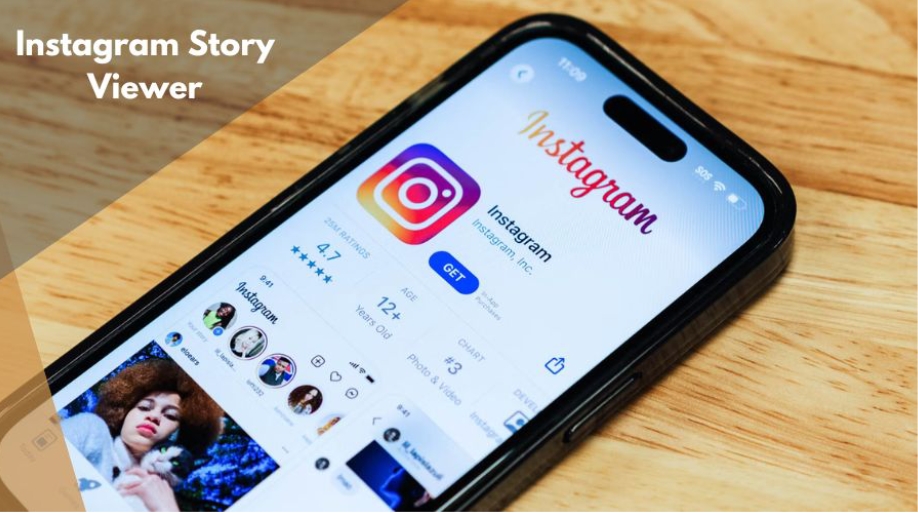You’ve got the idea!
You understand the market!
Now comes the real question: How do you build it right – without wasting time or money?
For every entrepreneur or product team, the dilemma is real: Should you go for a native or a hybrid app?
One promises top-tier performance and a flawless user experience. The other gets you to market faster with fewer upfront costs. And in a world where users expect speed, convenience, and personalization at their fingertips, making the wrong choice can set you back before you even launch.
The mobile app industry isn’t slowing down, downloads are projected to hit 299 billion. With this explosive growth, businesses are doubling down on apps to stay relevant, connect with customers, and innovate quickly.
But hiring the right Android app developer isn’t just a technical decision; it’s a strategic one that can shape your app’s success.
This article will help you break it down. We’ll explore the best android development approach for business, weigh the pros and cons, android app development services comparison and help you decide which path is right for your app’s success in 2025 and beyond.
What are Native Apps?
Native apps are developed specifically for a single operating system using platform-specific programming languages – Java or Kotlin for Android, and Swift or Objective-C for iOS. These apps are built within a secure ecosystem, following the technical standards and user experience guidelines set by the platform.
The result? A smooth, fast, and intuitive experience that fully leverages native android app performance for smooth and responsive interactions.
One of the key strengths of native app development lies in its ability to access and fully utilize device-specific features such as the camera, GPS, microphone, address book, and more – without relying on third-party plugins or workarounds.
Take Spotify, for example. A leading music streaming app, Spotify is built natively for both iOS and Android platforms, allowing it to deliver real-time audio streaming with minimal latency. Its native architecture enables seamless integration with device functionalities like background playback, notifications, and offline mode – ensuring a fluid, high-performance user experience on every device.
However, native development isn’t always the right fit – especially when speed, cost-efficiency, and cross-platform reach are top priorities. This is where hybrid apps come into play.
What are Hybrid Apps?
Hybrid apps are designed to run on multiple platforms using a single codebase, making them a highly efficient and budget-friendly alternative to native development. Built with standard web technologies like HTML5, CSS, JavaScript, or C#, hybrid apps are then wrapped in a native container that allows them to function across operating systems such as Android and iOS.
To bridge the gap between web code and native device features, hybrid apps rely on plugins specific to each OS. These plugins allow access to functionalities like the camera, GPS, or push notifications – similar to native apps, but with a more streamlined development process.
A great example of a hybrid app in action is Instagram. This globally popular photo-sharing app blends native functionality with web technologies to create a seamless cross-platform experience. Its camera features and animations run smoothly thanks to direct integration with device hardware, while parts of the app like the Explore tab – use web components to dynamically serve personalized content. The result is a powerful, responsive app that feels native to users, regardless of their device.
And that’s the key: most users don’t care whether an app is native or hybrid – they care how it works, and how well it performs.
So, which approach should you choose – native or hybrid?
Let’s break down the Android app development services comparison, so you have all the insights needed to make the best decision for your business.
Native Vs Hybrid Android App Development
When deciding how to build your Android app, one of the most crucial choices you’ll face is whether to go with native or hybrid development. Each approach has its own set of strengths and trade-offs in terms of performance, cost, speed, scalability, and user experience.
To help you make an informed decision, here’s a side-by-side comparison that breaks down the key differences between native and hybrid apps:
| Basis of Comparison | Native Apps | Hybrid Apps |
| Programming Languages | Developed using platform-specific languages like Kotlin (Android) and Swift (iOS). | Built using web technologies like HTML, CSS, and JavaScript. |
| Code Portability | Separate codebases are required for each platform. | A single codebase can run across multiple platforms. |
| Time to Market | Takes longer due to separate development, UI design, and testing for each OS. | Faster to launch since one codebase serves all platforms. |
| Scalability | Best suited for apps that demand high performance and complex features. | Ideal for MVPs or lightweight applications. |
| Access to Native Features | Full access to all device-specific features (camera, GPS, biometrics, etc.). | Requires plugins to access native features, which may have limitations. |
| Performance | Delivers superior performance, especially for intensive or 3D applications. | May lag behind in performance, especially with complex UI or animations. |
| App Store Approvals | Must go through App Store/Play Store approval processes. | Some hybrid apps can be accessed via browsers, bypassing store approvals. |
| Development Time & Cost | Higher due to separate development efforts for each platform. | Lower cost and faster development using a shared codebase. |
| Maintenance | Requires individual updates and maintenance per platform. | Easier and cheaper to maintain – update once, deploy everywhere. |
| Best Use Case | Ideal when user experience, speed, and performance are critical. | Perfect for building MVPs or apps with simple functionality and wider reach. |
At the end of the day, your choice impacts one thing the most – your users’ experience. With the android app development services comparison in hand, it’s time to explore which approach will help you build an app that not only works, but wins user trust and engagement.
Which is the best Android Development Approach for Business?
Deciding between native and hybrid app development isn’t just a technical choice – it’s a strategic business decision. It depends on your app’s complexity, budget, performance expectations, and long-term goals.
Let’s break down the key considerations that can guide your decision:
1. Is Your App Simple or Feature-Rich?
Start by evaluating the type of app you want to build. If you’re developing a content-driven or MVP-style app and working within a tight budget, a hybrid solution using frameworks like Flutter or React Native can be a smart move. These platforms let you reuse code across iOS and Android, speed up time-to-market, and reduce android app development costs.
However, if your vision includes complex functionalities, deeper hardware integrations, or real-time interactions, native app development is the stronger long-term choice. Though it requires building separate apps for each platform, native development ensures maximum performance, responsiveness, and stability.
2. Look Beyond Speed – Think Long-Term Value
Hybrid android app benefits, like quick development, may sound appealing – but don’t let short-term convenience compromise long-term user satisfaction.
The takeaway? If user experience and long-term trust are top priorities, native is a worthwhile investment.
3. Let Your Business Goals Guide You
Ask yourself what matters more at your current stage: Hybrid’s maximum reach or Native android app performance?
- If your goal is rapid growth and you need a cost-effective way to reach both Android and iOS users, a hybrid framework can offer solid performance with a faster turnaround.
- But if you’re building a high-stakes app like one in the finance, health, or e-commerce space – where speed, security, and deep hardware integration matter, native is the more reliable approach.
Align your tech choice with your business model, audience needs, and product roadmap.
4. Prioritize Native for Design-Heavy or Immersive Experiences
Planning to build a design-first or immersive platform – something like a social media app, AR-based game, or a high-end e-commerce app?
Native is your best bet.
Why? Because native apps deliver:
- Fluid animations.
- Low-latency interactions.
- Better access to camera, GPS, sensors, and AR/VR modules.
- Rich, platform-consistent UI.
When it comes to visual quality and responsiveness, native android app performance simply outshines hybrid frameworks. And while it does demand more time and investment, the payoff is clear: Repeat Users, Better Reviews, and Higher Engagement.
Ultimately, when it comes to native vs hybrid android app development, the choice should come down to what your app needs today – and how you envision it evolving tomorrow. Both approaches offer powerful tools to bring your idea to life, but only one may align perfectly with your business goals, resources, and audience expectations.
Conclusion
Choosing between native and hybrid app development isn’t a one-size-fits-all decision – it depends on your app’s purpose, complexity, budget, and long-term vision. While hybrid android app benefits like faster development and cost-efficiency are appealing, native apps stand out with superior performance, greater reliability, and seamless integration with device hardware.
The key is to strike the right balance between short-term practicality and long-term value.
If you’re unsure which path to take, don’t leave it to guesswork.
You can partner with a professional mobile app development services provider like DevStory to help evaluate your goals, recommend the best-fit technology, and bring your vision to life with precision. With the right guidance, you’ll be able to build an app that not only works – but wins.




